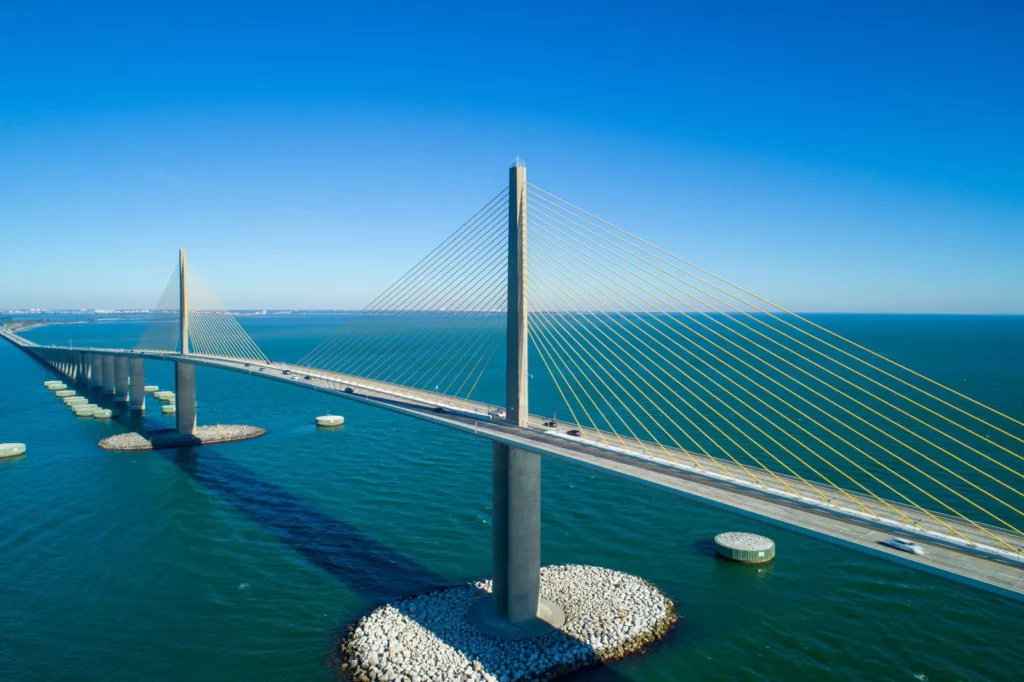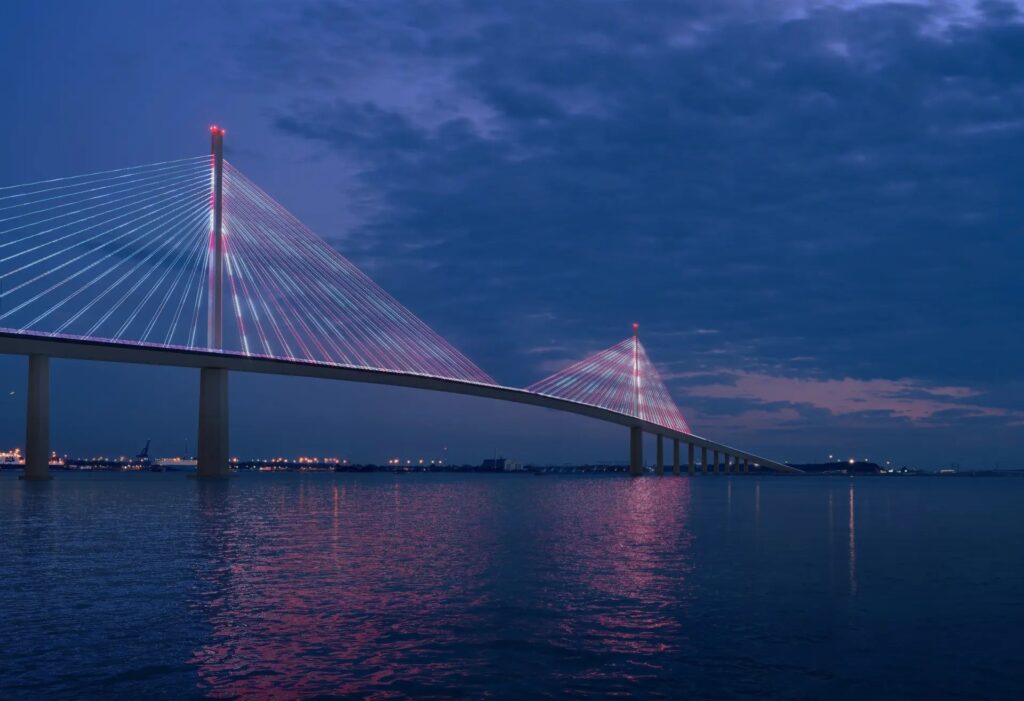blog
Seismic Behavior of Cable-Stayed Bridges: Interaction of Pylon Shape and Cable Layout

Seismic Behavior of Cable-Stayed Bridges: Interaction of Pylon Shape and Cable Layout
The seismic behavior of cable-stayed bridges is a critical issue in the structural design of these long-span, visually striking bridges. Their high seismic mass and the nonlinear behavior of cables require advanced multi-variable analyses.
This research paper, titled “Evaluation of Pylon Shape and Cable Layout Interaction on the Seismic Behavior of Cable-stayed Bridges” explores the combined effect of pylon shape and cable configuration on seismic response. Unlike previous studies that evaluated these parameters independently, this study employs nonlinear spectral dynamic analysis to assess their interaction comprehensively. Cable inclination angle is also introduced as a third variable.

Sunshine Skyway Bridge – Tampa Bay, Florida
- The seismic performance of the bridge can vary significantly based on the combination of pylon shape and cable layout.
- Harp cable configurations in A and Diamond pylons significantly reduce the natural period and increase structural stiffness.
- Fan arrangements perform better in H-shaped and Single pylons in terms of stiffness and dynamic response.
- Bridge and special structure designers
- Structural and earthquake engineering researchers
- Graduate civil engineering students
- Infrastructure clients aiming for safe and optimized cable-stayed bridge designs

